The Effects of Diabetes and Strategies to Slow Its Progression
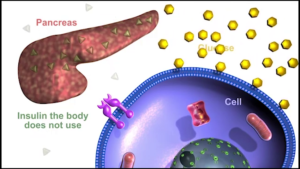 Diabetes is a chronic condition that arises when the pancreas fails to produce sufficient insulin or when the body cannot effectively utilize the insulin it produces. Insulin is the crucial hormone that regulates blood glucose levels. According to a report by the International Diabetes Federation released in November 2021, one in ten people globally has diabetes. Alarmingly, one in two individuals with diabetes is unaware of their condition, and every five seconds, someone dies from diabetes or its complications. If left untreated, diabetes can wreak havoc on the body, damaging the eyes, heart, and kidneys, often leading to severe and debilitating conditions. In today’s edition of Belize on Reel, News Five’s Marion Ali explores how diabetes can devastate the human body and shares effective strategies for controlling the disease. Here’s her insightful report.
Diabetes is a chronic condition that arises when the pancreas fails to produce sufficient insulin or when the body cannot effectively utilize the insulin it produces. Insulin is the crucial hormone that regulates blood glucose levels. According to a report by the International Diabetes Federation released in November 2021, one in ten people globally has diabetes. Alarmingly, one in two individuals with diabetes is unaware of their condition, and every five seconds, someone dies from diabetes or its complications. If left untreated, diabetes can wreak havoc on the body, damaging the eyes, heart, and kidneys, often leading to severe and debilitating conditions. In today’s edition of Belize on Reel, News Five’s Marion Ali explores how diabetes can devastate the human body and shares effective strategies for controlling the disease. Here’s her insightful report.
Marion Ali, Reporting
The Belize Diabetes Association estimates that around fifty thousand Belizeans, aged between twenty and seventy-nine, are living with diabetes. A person is considered diabetic if their blood glucose level exceeds one hundred and twenty-six mg/dL, and significant bodily harm begins when levels surpass one hundred and fifty mg/dL. However, Diabetes Specialist Dr. German Alamilla emphasizes that a disciplined regimen of a balanced diet, medication, and exercise can lower these levels significantly, potentially extending a patient’s life by years. The crucial first step is discovering your status.
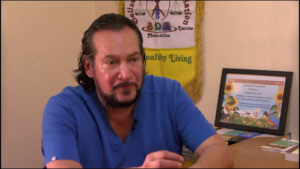
German Alamilla
Dr. German Alamilla, Diabetes Specialist
“Some people are fearful of the testing because of the pricking of the finger, but this is necessary for you to control the levels of sugar in your body. Why? Because once the sugar is up, it’s damaging the whole system, affecting every organ in your body. Some people have this concept that diabetes – I can have a two hundred, two-fifty level and they say, “Oh that’s fine, that’s controlled.” No, that is not controlled. For me, I ask my patients to have at least below one-fifty or even closer to one-forty would be controlled. It can be controlled effectively with a diet and exercise, a balanced diet. I go more for the low carb, high protein diet; it seems to do a better job.”
Alamilla says that if the blood glucose level goes above one-fifty, it begins to wreak havoc on the body without the patient even knowing.
 Dr. German Alamilla
Dr. German Alamilla
“Once your sugar is above one-fifty, it begins to bind with other chemicals in your blood and the worst one it binds with is the LDL Cholesterol, the low-density lipoprotein cholesterol is considered the bad cholesterol. Once that is bound, it deposits on the inside lining of the arteries, causing an inflammation and that inflammation develops into atherosclerotic plaque and that atherosclerotic plaque is what makes the diameter of the vascular of the artery goes down and so the circulation and the blood passing through is less and this less circulation or ischemia is what goes damaging your eyes, your heart, your kidneys, the legs. You can lose the functionality of a whole kidney and you won’t feel a thing because the other kidney compensates and while the other kidneys compensate, it’s getting damaged too.”
Failing to get tested for diabetes means you might remain unaware of the condition until its symptoms become glaringly obvious. Unfortunately, by then, the disease often has already inflicted irreversible damage on vital organs like the kidneys or heart. One telltale sign of diabetes is poor circulation in the hands or feet. Gary Ayuso, the visionary behind the Anodyne Therapy Center of Belize on Cemetery Road, is also a certified Anodyne Therapist. He passionately explains that their patented equipment revitalizes limbs by encouraging the body to release nitric oxide, promoting healing and improved circulation.
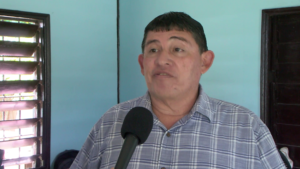
Gary Ayuso
Gary Ayuso, Anodyne Therapist
“Nitric oxide is a physiological compound of the body. And what it does, it vasodilates. One of the main effects of diabetes is allowing the body or tricking the body not to produce nitric oxide. In that case, it causes poor circulation, which is peripheral neuropathy. And that’s the effect, that’s the main effect of diabetes, it keeps shutting down the body a bit at a time, a bit at a time, causing limbs to go numb, then necrotic, et cetera. Another thing diabetes does is because the eyes have the smallest capillaries in the body, the circulation, is not enough to open. So it affects the eyes tremendously. Now what this infrared laser does, it allows the body to produce nitric oxide. So this machine actually stimulates the body to produce nitric oxide, so it begins to vasodilate opening veins, arteries, capillaries, and stuff like that. So it actually rejuvenates the body and bring, bring back new cells.”
Ayuso has been offering the service to diabetics and other patients since 2007 and since then, he says he has had a growing number of clients who find the treatment useful.
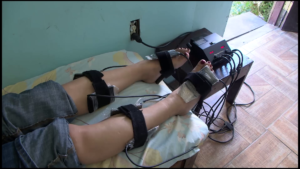 Gary Ayuso
Gary Ayuso
“We have been open since 2007 and we’ve helped a lot of people. I can recall once a lady came in, the door and say, Mr. Ayuso you need to save my limb because the doctor said they’ll cut it off in two to three weeks. And I said, “Come every day” and we did it. And when she went back to the doctor, the doctor said, “I don’t know what you’re doing, but we don’t have to cut off that leg again.” So things like that, we have a lot of success stories.”
At the Belize Diabetes Association, located at the bustling intersection of Central American Boulevard and Mahogany Street, registered members can attend free group sessions on diabetes management. Additionally, they can benefit from personalized one-on-one consultations with Dr. Alamilla, who generously volunteers his expertise. The Association also provides essential supplies like syringes, glucose monitors, and strips to its members, thanks to generous donations. President Lynette Valerio proudly highlights that they offer a range of support services to assist those living with diabetes.

Lynette Valerio
Lynette Valerio, President, Belize Diabetes Association
“We have a support system where we have a doctor who works closely with us. He would see patients in a group setting and even have one-on-one session with persons who would need more support in managing their diabetes. And the services we provide are to support and educate people on diabetes. We also do a lot of awareness programs as well. On a monthly basis we have a meeting with members and persons living with diabetes where we would invite somebody who can speak on diabetes, maybe a doctor, a medical practitioner, who would speak on everything about diabetes.”
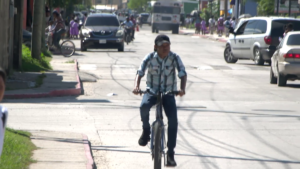 Twenty-year-old Deandre Dawson was diagnosed with Diabetes at age four. He told us that in his childhood, watching his friends eat sweets was difficult when he couldn’t. Then he began consuming sugary stuff and it almost cost him his life.
Twenty-year-old Deandre Dawson was diagnosed with Diabetes at age four. He told us that in his childhood, watching his friends eat sweets was difficult when he couldn’t. Then he began consuming sugary stuff and it almost cost him his life.
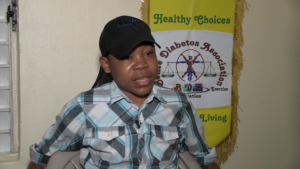
Deandre Dawson
Deandre Dawson, Diabetic Patient
“Seeing your friends, students eating the stuff that you cannot eat – candies, ideals, stuff like, tablatas, fudge, you know, cakes, that went very hard on me, meaning that I still went and do it behind closed doors. That took me those semi comas, hallucinating. Watching my peers, in regards to drinking and foodwise, us as diabetics can take a one and two drink. There’s nothing that we cannot do, I would say. It’s just in moderation.”
Dr, Alamilla who, incidentally, has also been suffering from diabetes for over twenty years, says it is possible for people to effectively manage their glucose level while still enjoying life. Marion Ali for News Five.







Facebook Comments